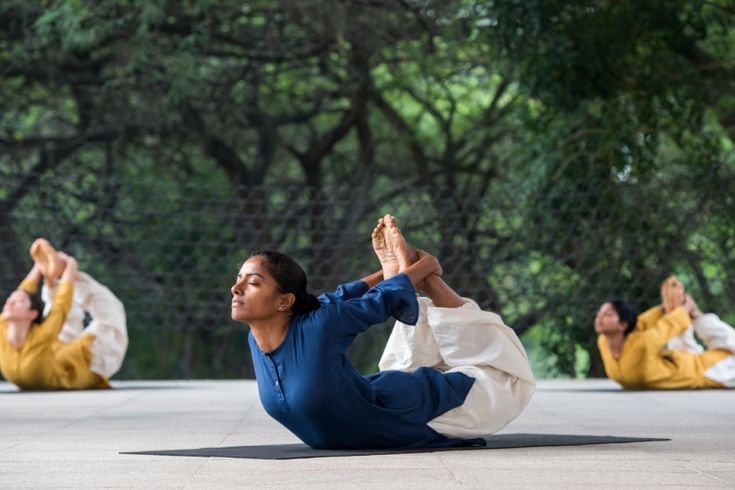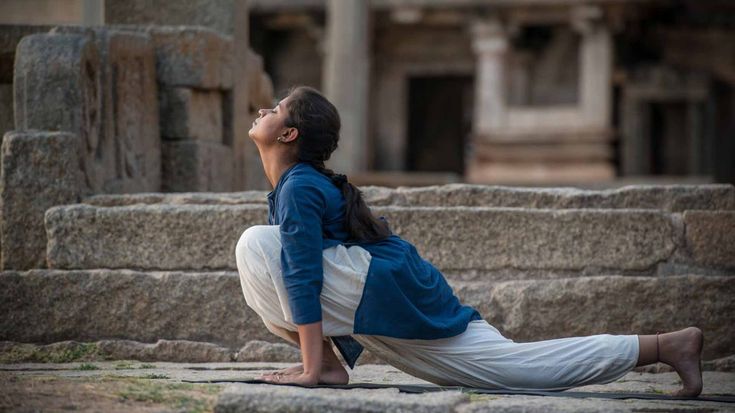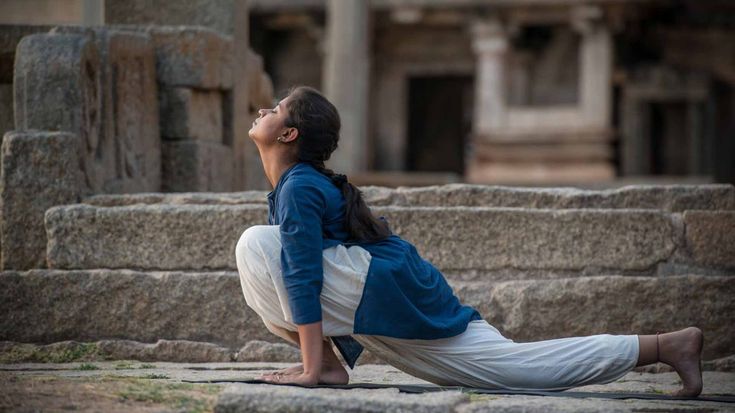Yoga is more than just a physical practice; it’s a way of life that brings peace, balance, and mindfulness into your daily routine. Whether you’re seeking to improve flexibility, strength, or mental clarity, yoga can offer a multitude of benefits. In this beginner’s guide to yoga, we will explore the foundations of yoga practice, including how to find your flow, key yoga poses to start with, and tips to help you embrace yoga as part of your lifestyle. By the end of this guide, you’ll have the confidence to step onto your yoga mat and begin your journey toward holistic well-being.
What is Yoga?
Yoga is an ancient practice that originated in India over 5,000 years ago. Its core philosophy is rooted in the belief that mind, body, and spirit are interconnected, and through the practice of yoga, you can harmonize these aspects of yourself. While yoga is often associated with physical postures (asanas), it also encompasses breathing techniques (pranayama), meditation, and ethical principles (yamas and niyamas). Yoga can be a deeply transformative experience that promotes physical health, emotional stability, and spiritual growth.

For beginners, yoga may seem intimidating, especially if you’re not familiar with the terminology or the different styles of practice. However, yoga is accessible to everyone, regardless of age or fitness level. The key to finding your flow in yoga is to approach the practice with patience, openness, and a willingness to explore your body and mind.
Understanding the Different Types of Yoga
Yoga is not a one-size-fits-all practice. There are various styles of yoga, each with its unique focus and benefits. As a beginner, it’s essential to choose a style that resonates with you. Here are a few popular types of yoga to consider:
- Hatha Yoga
Hatha yoga is a gentle and foundational practice that focuses on basic yoga poses and breathing techniques. It’s perfect for beginners who are looking to develop strength, flexibility, and balance without pushing their limits. Hatha classes often move slowly, providing ample time to focus on alignment and form. - Vinyasa Yoga
Vinyasa yoga is characterized by a flowing sequence of poses that are linked together with the breath. The word “vinyasa” means “to place in a special way,” and in vinyasa yoga, each movement is synchronized with an inhale or exhale. This style is dynamic and energizing, making it a great choice for beginners who want to work up a sweat while building strength and flexibility. - Iyengar Yoga
Iyengar yoga focuses on precise alignment in each pose. Props such as blocks, straps, and blankets are often used to help students achieve proper alignment and to make the practice more accessible. This style is excellent for beginners who want to develop a deep understanding of posture alignment. - Restorative Yoga
Restorative yoga is a slow-paced practice that emphasizes relaxation and stress reduction. Poses are held for longer periods, allowing the body to fully relax and release tension. This style is ideal for beginners looking to de-stress and improve their mental well-being. - Ashtanga Yoga
Ashtanga yoga is a more physically demanding practice that follows a set series of postures performed in a specific order. It is a structured style of yoga that can be challenging for beginners but offers great benefits for those who are looking to build endurance, strength, and flexibility.
Key Benefits of Yoga
It offers a wide range of physical, mental, and emotional benefits. Some of the most notable benefits include:
- Increased Flexibility
One of the most obvious benefit is improved flexibility. Regular practice helps stretch and lengthen muscles, which can increase range of motion and reduce stiffness. Over time, it can help you achieve a greater level of flexibility, especially in areas like the hips, hamstrings, and shoulders. - Improved Strength
It involves holding various poses that require strength, balance, and coordination. Many postures engage multiple muscle groups at once, helping to build functional strength and endurance. As you progress in your practice, you may notice improvements in your overall muscle tone and strength. - Stress Relief and Relaxation
It is known for its ability to reduce stress and promote relaxation. Through deep breathing and mindfulness practices, helps activate the parasympathetic nervous system, which is responsible for the body’s “rest and digest” functions. This can help calm the mind and reduce feelings of anxiety or tension. - Enhanced Mental Clarity
It encourages present-moment awareness, which can help clear mental fog and increase focus. Regular practice has been shown to enhance cognitive function, improve concentration, and foster a greater sense of mental clarity. - Better Posture
It emphasizes body alignment and awareness, which can help improve posture. Over time, It helps correct imbalances in the body that may lead to poor posture, such as rounded shoulders or a forward-tilting pelvis. - Improved Breathing
Pranayama, or breath control, is a key aspect of it. By learning to control and deepen your breath, you can increase oxygen flow to your body, enhance lung capacity, and reduce feelings of stress or anxiety.
Starting Your Practice
If you’re new to it, it’s important to approach your practice with an open mind and a sense of curiosity. Here’s a step-by-step guide to help you get started:
- Find a Comfortable Space
Choose a quiet, calm space where you can practice without distractions. You don’t need a large area—just enough room to move freely and lay down your mat. A peaceful environment will help you focus on your practice and cultivate a sense of mindfulness. - Get the Right Equipment
To begin your practice, you’ll need a mat, comfortable clothing, and possibly a few props (blocks, straps, or blankets). The mat will provide cushioning and support during your practice, while the clothing should allow for freedom of movement. Props can help you achieve proper alignment and make poses more accessible. - Learn Basic Poses
As a beginner, it’s important to start with basic poses that are easy to learn and hold. Here are a few fundamental poses to get you started:- Mountain Pose (Tadasana): Stand with your feet hip-width apart, arms at your sides, and your body aligned. Engage your thighs, lift your chest, and breathe deeply. This pose helps improve posture and balance.
- Downward-Facing Dog (Adho Mukha Svanasana): Start in a tabletop position with your hands and knees on the mat. Lift your hips toward the sky, keeping your hands and feet grounded. This pose stretches the hamstrings and spine.
- Child’s Pose (Balasana): Kneel on the mat with your knees wide apart and your toes touching. Sit back onto your heels and stretch your arms forward, resting your forehead on the mat. This is a restful pose that helps release tension in the back and shoulders.
- Warrior I (Virabhadrasana I): Stand with your feet wide apart, turning one foot out and bending the knee while keeping the other leg straight. Stretch your arms overhead and engage your core. This pose builds strength in the legs and opens the hips.
- Focus on Your Breath
Breath is the foundation of it’s practice. As you move through poses, pay attention to your inhales and exhales, using your breath to guide your movements. Inhale as you lengthen and exhale as you deepen into a stretch. Breath awareness can help you stay centered and calm throughout your practice. - Start Slowly and Be Patient
It is not about achieving perfection in each pose; it’s about the journey and the connection between your mind and body. Start slowly, and don’t worry about keeping up with others or pushing yourself too hard. Over time, your flexibility, strength, and confidence will improve. - Practice Regularly
Consistency is key to experiencing the full benefits of it. Try to practice at least 2-3 times per week, gradually increasing the duration and intensity of your sessions as you feel more comfortable. Remember, it is a lifelong practice, and there’s always room for growth.
Finding Your Flow in Yoga
In this, finding your flow refers to the harmonious connection between your body, breath, and mind. As you practice, aim to synchronize your movements with your breath, allowing you to move fluidly through poses. Flow yoga, like vinyasa, is designed to help you achieve this sense of seamless movement. When you find your flow, you’ll experience a sense of ease and grace, both on and off the mat.

The key to finding your flow is to let go of expectations and judgments. Focus on your breath, honor your body’s limits, and embrace the present moment. As you continue practicing , you’ll begin to notice how your body becomes more fluid, your breath more controlled, and your mind more calm.
Conclusion
Yoga is a transformative practice that offers a wide range of benefits for both the body and the mind. As a beginner, it’s important to approach it with an open heart, patience, and a willingness to explore. By starting with basic poses, focusing on breath, and committing to regular practice, you can find your flow and experience the profound impact it can have on your life. Remember, it is not a destination—it’s a journey, and every step you take brings you closer to a deeper sense of well-being.
So, unroll your mat, take a deep breath, and begin your practice today. Finding your flow in it is within reach, and the rewards are worth every moment spent on the mat.


Leave a Reply to Creating a Digital Vision Board for 2025 – int100.in Cancel reply